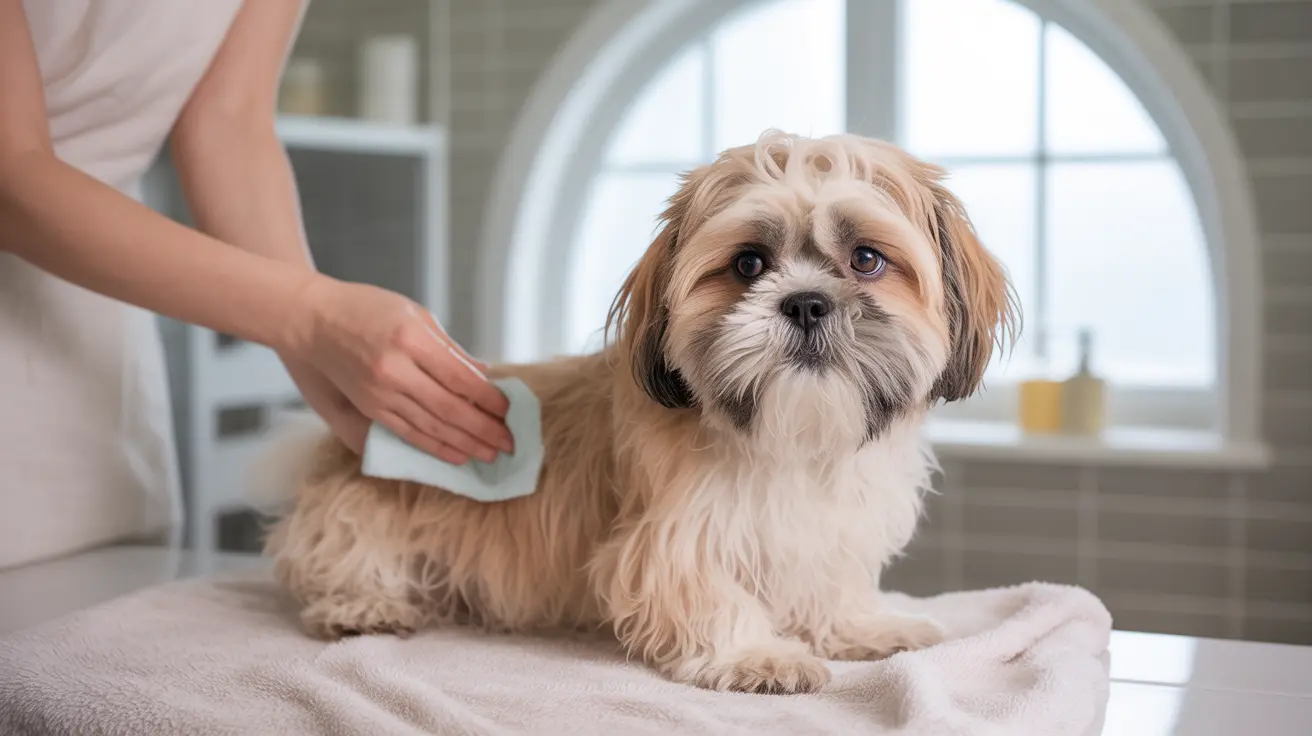Understanding Natural Canine Hygiene
Unlike humans, dogs have evolved with anatomical features that generally keep them clean without assistance. Their retractable anus and lack of buttocks typically result in minimal mess after defecation. Most healthy dogs can maintain adequate hygiene through their natural self-cleaning behaviors, including occasional licking.
However, certain factors can interfere with this natural process, making owner intervention necessary in specific cases.
When Wiping is Necessary
Long-Haired Breeds
Dogs with long or thick fur around their rear end often require more attention to hygiene. Breeds such as Shih Tzus, Yorkshire Terriers, and Collies may need regular cleaning to prevent fecal matter from becoming trapped in their fur and causing matting or skin irritation.
Medical Conditions and Special Cases
Several situations may necessitate wiping your dog's bottom:
- Diarrhea or soft stools
- Mobility issues in elderly or arthritic dogs
- Recent surgery or illness
- Breeds with corkscrew tails or deep tail pockets
- Overweight dogs who cannot reach to clean themselves
Proper Cleaning Techniques and Tools
When cleaning is necessary, it's important to use the right approach and materials:
Recommended Cleaning Products
- Pet-specific wipes (avoid human baby wipes)
- Warm water and soft washcloth
- Gentle, pet-safe cleansing solutions
- Hypoallergenic pet wipes for sensitive skin
Proper Cleaning Method
- Use gentle, circular motions
- Clean from front to back
- Avoid applying pressure
- Pat the area dry with a clean towel
- Reward your dog after cleaning
Preventive Measures and Maintenance
To minimize the need for frequent cleaning:
- Keep the fur around the anal area trimmed
- Maintain a healthy diet to promote firm stools
- Schedule regular grooming appointments
- Monitor your dog's weight
- Address any digestive issues promptly
Signs That Require Veterinary Attention
Watch for these warning signs that may indicate a need for professional medical attention:
- Excessive scooting or dragging
- Persistent diarrhea
- Visible irritation or inflammation
- Strong odors
- Blood in stool or around the anal area
Frequently Asked Questions
Should I wipe my dog's bum after every poop or only when it looks dirty?
For most healthy dogs, wiping after every bowel movement isn't necessary. Only wipe when you notice visible debris, loose stool, or if your dog has long fur that tends to collect matter.
How do I safely clean my dog's bum if they have long fur or messy poop?
Use pet-specific wipes or a damp washcloth with warm water. Gently clean from front to back, being careful not to pull on tangled fur. For severe messes, you may need to trim the area or seek professional grooming help.
What are the signs that my dog's anal glands might be causing scooting or discomfort?
Signs include frequent scooting, excessive licking of the area, a strong fishy odor, and visible swelling around the anus. These symptoms warrant a veterinary examination, as anal gland issues require professional treatment.
Are dog-specific wipes better than using human wipes for cleaning my dog's rear?
Yes, dog-specific wipes are formulated to be safe for canine skin pH levels and free from harmful chemicals found in human wipes. Always use products designed specifically for pets.
When should I consult a vet about my dog's bum hygiene or persistent scooting?
Consult a veterinarian if you notice persistent scooting, inflammation, bleeding, strong odors, or if your dog shows signs of pain or discomfort during defecation or cleaning.
Conclusion
While most dogs don't require regular bottom wiping, being attentive to your pet's hygiene needs and knowing when to assist can prevent discomfort and health issues. Always use appropriate products and techniques, and don't hesitate to consult your veterinarian if you notice any concerning symptoms.






